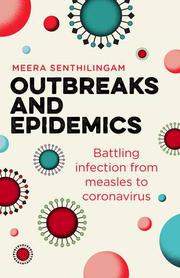OUTBREAKS AND EPIDEMICS

Coronaviruses have been with us for a very long time, but the one that first captured the world’s attention emerged only two decades ago, when Severe Acute Respiratory Syndrome spread out of Hong Kong to 32 countries, eventually killing some 810 people over its five-month run. That seems a trifle against what CNN international health editor Senthilingam calls “a viral relative that would wreak greater havoc across the planet”: the current outbreak of COVID-19. Although the government of China has not been entirely transparent about the outbreak, it appears at this writing that SARS prepared health workers to quarantine and isolate whole cities to keep the disease from spreading, and the number of new cases there has begun to decline. Outside China, of course, COVID-19 has become a pandemic, “the word that invokes fear in almost everyone,” since pandemics are new diseases that require novel responses. It is no comfort to know that COVID-19 is but one of a roster of “emerging diseases” monitored lest they, too, become pandemics, including Ebola and Marburg viral diseases, Crimean-Congo hemorrhagic fever, and even a “Disease X”—“meaning a completely new, previously unseen infectious disease, such as COVID–19 at the time of its emergence.” Though some have likened COVID-19 to the flu, there are few commonalities other than the fact that some populations—e.g., the immune-suppressed or the elderly—are more susceptible to being killed by both than other populations, as was witnessed in 2017-2018 with a flu that killed 61,000 people in the U.S. alone, leading Senthilingam to note that “it’s fair to say the harm caused by influenza is far greater than people realize.”
Thanks for reading.
Please Share, Comment, Like the post And Follow, Subscribe CTS Store.
fromSource




Post a Comment